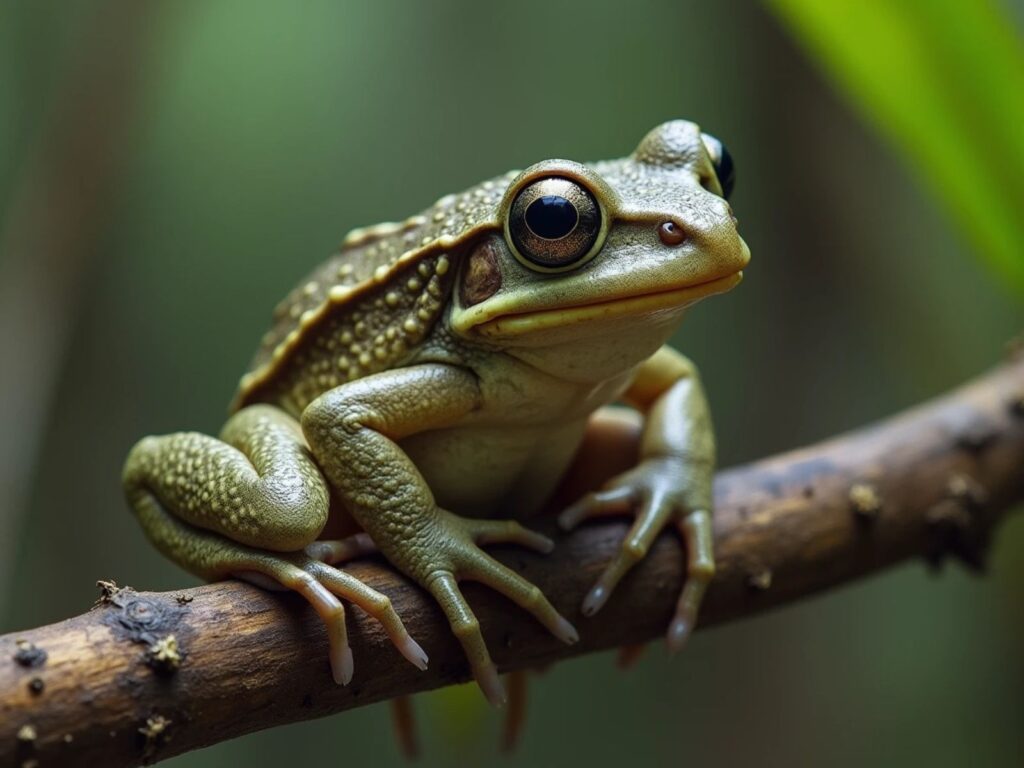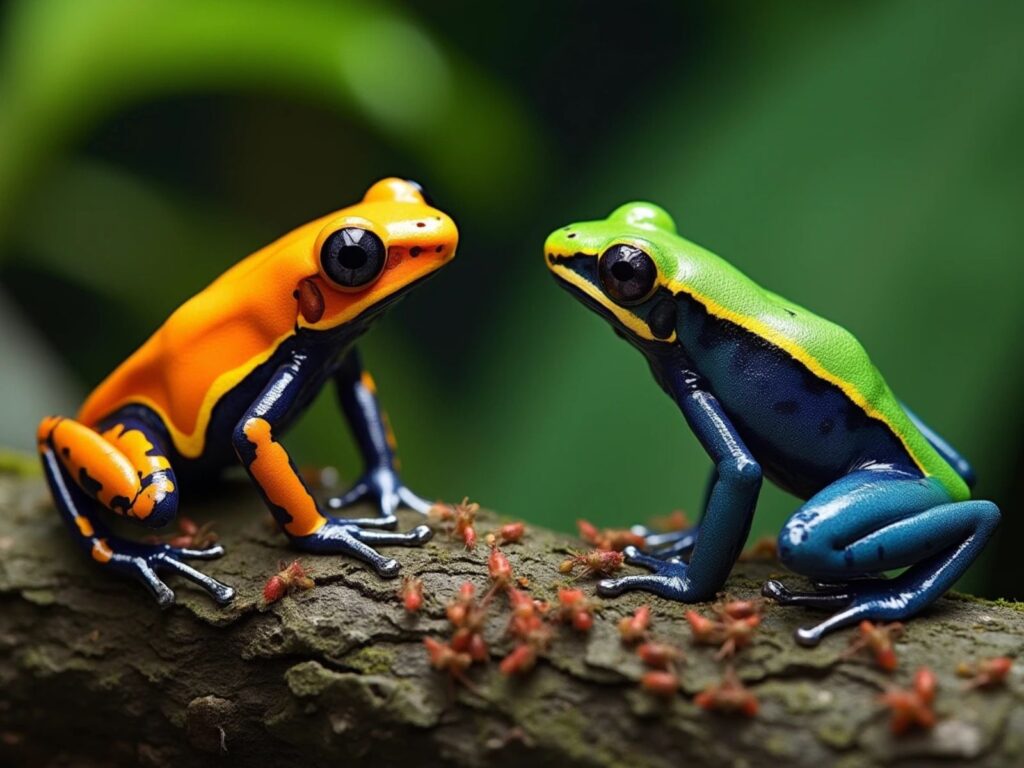Home » Amphibians » The Truth About Poisonous Frogs: From Dart Frogs to Tree Frogs

Did you know that only about 2% of frog species are seriously toxic to humans? Frogs are an intriguing creatures. But you might always wonder how toxic are they in the wild? To distinguish fact from myth, we are gonna see how frogs toxicity is made and what precotion should we take . From the poison dart frog, green tree frog, and gray tree frog.

Not all toxic frogs are created equal. While some can be deadly, others merely cause mild skin irritation. Here’s what makes frogs poisonous:
• Secretions from skin glands
• Diet-derived toxins
• Environmental factors
• Defensive adaptations
• Primary defense against predators
• Protection from bacterial and fungal infections
• Territorial defense
• Mating success (in some species)

In North America, gray tree frogs are very commun and frequently found in wetlands and forests. They are mildly toxic, but not very dangerous. Their skin secretes a poison that, while harmless to birds and snakes , can irritate humans, causing slight discomfort.
Effect on Humans: If you touch your lips or eyes after contact with a gray tree frog, you will experience a slight burning effect. Their skin secretions contain irritants.
Safety Advice: To prevent skin irritation or pain, you should always wash your hands after handling any contact.

Green tree frogs are fully non-toxic to humans. They are very common in Australia and the Southeast of the United States, and they do not release any toxic chemicals. Plus, their gentle nature makes them a very popular pet.
• Not all green frogs are toxic
• Gray doesn’t mean dangerous
• Size doesn’t indicate toxicity level

Here’s something fascinating: poison dart frogs bred in captivity aren’t toxic! This is because:
Different species pack different punches:
Mild Reactions
• Skin irritation
• Temporary numbness
• Minor swelling
• Itching
Severe Reactions (Rare)
• Burning sensation
• Difficulty breathing
• Severe swelling
• Need immediate medical attention
The toxicity of frogs, such as poison dart frogs, varies according to what they eat, even though they are known to be hazardous in their natural habitats. They are safe for human handling since they have lost their deadly qualities while in captivity. Green tree frogs are completely risk-free, while gray tree frogs are mildly poisonous but still not deadly. By being aware of the various frog species’ levels of toxicity, we may debunk misconceptions and enjoy these amazing amphibians fearlessly.
Sign up for our newsletter and receive the next story before it is lunched
Our blog is made with love to give you advice on how to take care of your beloved pets and to help you learn everything about their stories